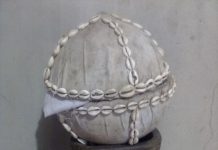Click here for previous session
Dr. C.J. Scofield, D.D., backed by eight other Doctorates of Divinity, asserts the
above even more clearly in his footnote to this verse: “It is generally agreed that this
verse has no manuscript authority and has been inserted.”131
“Generally agreed”? In the words of Professors Kurt and Barbara Aland, “A
glance at the data in the critical apparatus of NestleAland (which is exhaustive for this
passage) should make any further comment unnecessary to demonstrate the secondary
nature of this addition and the impossibility of its being at all related to the original form
of the text of 1 John.”132
Professor Metzger, who also attributes this passage either to Priscillian or to his
follower, Bishop Instantius, states, “That these words are spurious and have no right to
stand in the New Testament is certain …”133 In another work, he adds, “Modern Roman Catholic scholars, however, recognize that the words do not belong in the Greek
Testament …”
How, then, did 1 John 5:7 invade the scripture? This is no mystery to students of
divinity. It appears to have been originally written into the margin of scripture by a late
manuscript copier. Those who sought support for Trinitarian ideology transported the
marginal note into the text and incorporated it into the Old Latin Bible sometime during
the fifth century.
* In this manner, they adopted the verse not because it was valid, but
because it was useful. In the words of E. Gibbon,
The memorable text, which asserts the unity of the Three who bear
witness in heaven, is condemned by the universal silence of the orthodox
fathers, ancient versions, and authentic manuscripts…. An allegorical
interpretation, in the form, perhaps, of a marginal note, invaded the text of
the Latin bibles, which were renewed and corrected in a dark period of ten
centuries. After the invention of printing, the editors of the Greek
Testament yielded to their own prejudices, or to those of the times, and the
pious fraud, which was embraced with equal zeal at Rome and at Geneva,
has been infinitely multiplied in every country and every language of
modern Europe.
Ehrman, in his Misquoting Jesus, brilliantly exposes how these verses infiltrated
the Greek in the form of a sixteenth century forgery. 136
All of which explains why laity love 1 John 5:7, and scholars don’t.
Although the King James and Catholic DouayRheims versions retain the verse,
scholars have unceremoniously expunged 1 John 5:7 from more modern and reputable
translations, to include the Revised Standard Version of 1952 and 1971, New Revised
Standard Version of 1989, New American Standard Bible, New International Version,
The Good News Bible, The New English Bible, The Jerusalem Bible, Darby’s New
Translation, and others. Most striking, however, is not the number of translations which
have removed this verse, but the number that have retained it, despite its lack of
manuscript authority. What should we conclude—that such devotion is to truth, or to
doctrinal convention? The New King James Version, seemingly reluctant to correct the
1611 version at risk of losing the paying audience, appears to fall into the doctrinal
convention category.
Even the New Scofield Reference Bible retains the verse. And here is a prime
example of disingenuousness in Bible translation. The Scofield Reference Bible is
designed to meet the needs of scholars and students of divinity, and as such,
acknowledges the illegitimacy of 1 John 5:7 through the abovequoted footnote. The
Scofield Study Bible, however, is designed for the less critical eye of Christian laity, and
retains the verse without even hinting at its illegitimacy. Truth in translation, it would
seem, is audienceadjusted.
So what do scholars cite as scriptural evidence for the Trinity?






